- Home
- Best Pet for Me
- Are Chinchillas Good Pets
Are Chinchillas Good Pets?
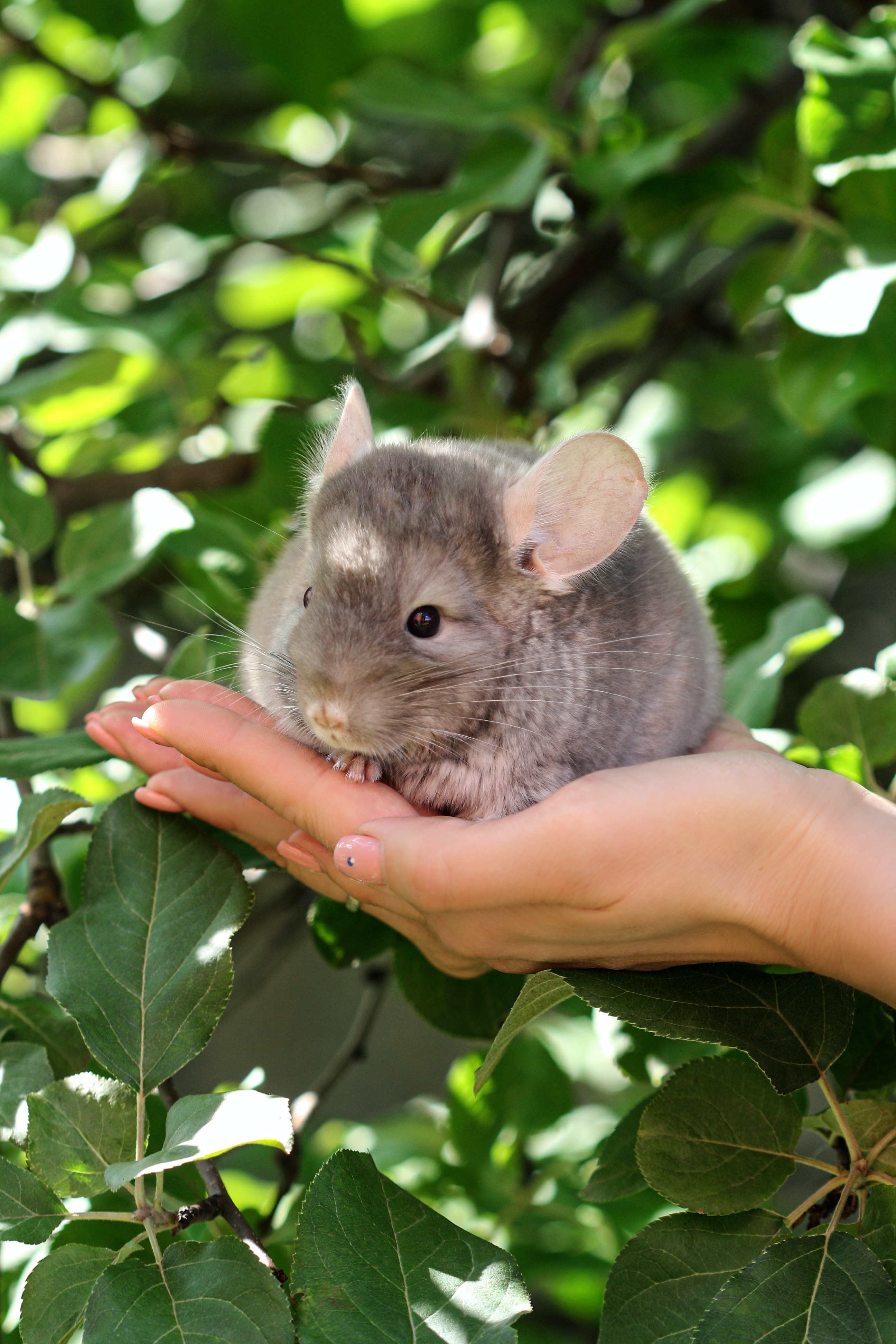 Photo by Nyusha Svoboda https://unsplash.com/photos/gray-rabbit-on-persons-hand-pTnsGY06GO0
Photo by Nyusha Svoboda https://unsplash.com/photos/gray-rabbit-on-persons-hand-pTnsGY06GO0Are chinchillas good pets to adopt? Chinchillas are captivating little creatures, native to the rugged, arid regions of the Andes Mountains in South America. Known for their strikingly soft, dense fur, these animals were originally adapted to the cold, high-altitude climates of their natural habitat. Their thick fur, which once helped protect them from the harsh conditions of the desert-like Andes, has made them highly sought after in the fur trade, though today they are treasured as unique and delightful pets.
Are chinchillas good pets? In addition to their adorable appearance—complete with large, expressive ears and bushy tails—chinchillas are renowned for their playful and curious nature. They love to jump and climb, making them entertaining companions for owners who provide them with an enriching environment. However, their care needs are quite specific.
Are chinchillas good pets? Chinchillas require a very controlled environment to stay healthy. They thrive in cooler temperatures, ideally between 50-65°F (10-18°C), and can suffer if exposed to heat or humidity. Unlike many small pets, they cannot sweat and are prone to heatstroke if kept in temperatures higher than 80°F (27°C). For this reason, it's important to place them in a cool room with good ventilation and to avoid direct sunlight.
Are chinchillas good pets? One of the most endearing and unique features of chinchillas is their need for dust baths. In the wild, they roll in fine volcanic ash to clean and maintain their luxurious fur, as their coats are too dense to be washed with water. To replicate this behavior, pet chinchillas are given special dust baths made of volcanic ash, which helps keep their fur clean and free of oil. It’s a fascinating ritual to watch as they roll around in the dust, enjoying the bath as part of their grooming process.
Are chinchillas good pets? Another advantage of chinchillas as pets is their hypoallergenic nature. Unlike many other small furry animals, chinchillas produce fewer allergens, making them a great option for people with sensitivities to pet dander. However, it’s important to note that they still require regular grooming to prevent matting in their dense fur, and they can still trigger allergies in some individuals.
Are chinchillas good pets?Overall, chinchillas can make wonderful pets for those willing to meet their specific care requirements. With their playful personalities and unique grooming habits, they are sure to bring joy and entertainment to any home that can provide the right environment for them.
Creating the Perfect Home for Your Chinchilla: Space, Enrichment, and Comfort
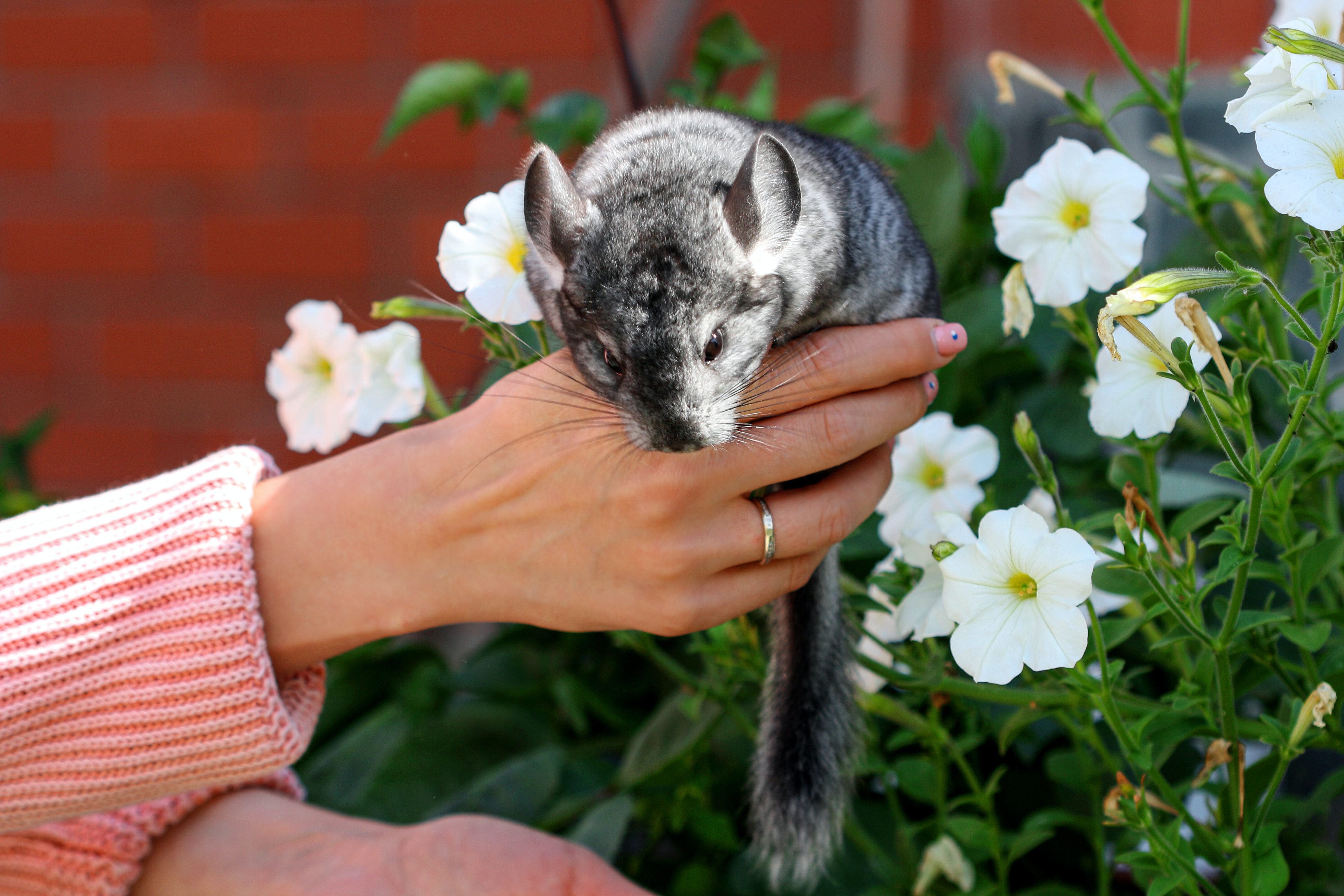 Photo by Nyusha Svobodahttps://unsplash.com/photos/person-holding-gray-and-white-cat-EhaE9mhqwR4
Photo by Nyusha Svobodahttps://unsplash.com/photos/person-holding-gray-and-white-cat-EhaE9mhqwR4Are chinchillas good pets?Chinchillas are energetic and active creatures that need plenty of space to move around, both inside their cages and during supervised playtime outside. While they’re small in size, they have a lot of energy and love to explore, jump, and climb. To keep them happy and healthy, it’s crucial to provide them with a spacious, enriching environment that meets their natural needs.
The smallest cage recommended for a single chinchilla should measure at least 2 feet by 18 inches in floor space and be 2 feet high. This size allows them enough room to move around, although larger cages are always better for their well-being. Wire cages are commonly used for chinchillas, as they provide plenty of ventilation. A metal collection pan placed underneath a wire floor is an excellent addition because it helps with cleaning—chinchillas are clean animals, but they do tend to make a mess with their bedding and food. The wire floor allows droppings to fall through, making it easier for owners to maintain cleanliness. However, it’s important to make sure the wire floor isn’t too large or too small, as this could cause injury to their delicate feet.
Aside from space, chinchillas need places to hide and feel secure. Providing dark, cozy hideaways or nesting boxes where they can rest undisturbed is essential to their mental health. These hides give them a sense of safety and privacy, which is especially important since chinchillas are prey animals by nature. Hiding spots also give them an area to retreat to if they feel stressed or overwhelmed.
Chinchillas are naturally curious creatures and love climbing and exploring. To keep them physically and mentally stimulated, you should include various branches, ramps, and platforms inside their cage. You can provide natural wooden branches for them to climb, chew, and explore—these help with their natural instincts to chew and promote healthy teeth. Additionally, different levels and platforms will allow your chinchilla to jump, climb, and exercise, mimicking their natural environment in the Andes mountains.
It's also important to give your chinchilla supervised playtime outside of its cage. Chinchillas love exploring new spaces, so providing a safe, enclosed area for them to run around in allows them to burn off energy, which is important for their overall health. Whether it's a playpen or a chinchilla-proofed room, ensure that the area is free of hazards such as exposed electrical wires, dangerous furniture, or small gaps where your chinchilla might get stuck.
By creating an environment with enough space to move, play, and hide, as well as providing regular playtime outside of the cage, you’ll ensure that your chinchilla stays active, happy, and healthy.
Chinchillas need lots of space in their cage to run around and supervised playtime outside of the cage. The smallest cage for one chinchilla would measure 2 feet by 18 inches and be two feet high. Wire cages are fine and a metal collection pan underneath a wire floor is helpful for keeping them clean.
You need to provide them with dark hidies and nesting boxes so they can feel comfortable and rest easy. Provide them with branches to climb on and different platforms to explore.
Choosing the Right Bedding for Your Chinchilla: Comfort and Safety First
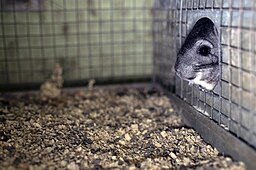 https://commons.wikimedia.org/wiki/File:Chinchilla_breeding_in_Ukraine_(48044136846).jpg
https://commons.wikimedia.org/wiki/File:Chinchilla_breeding_in_Ukraine_(48044136846).jpgWhen it comes to setting up a comfortable and safe environment for your chinchilla, selecting the right bedding is one of the most important decisions you'll make. Chinchillas are curious creatures that tend to nibble on whatever they come into contact with, so it’s essential to choose bedding materials that won’t harm them if ingested. Avoiding bedding that is dusty, contains ink, or has harmful chemicals is crucial, as these substances can irritate their respiratory system, cause blockages in their digestive tract, or even make them sick.
Certain bedding types, such as paper or textile-based products, are not ideal. Paper bedding, while absorbent, can be too dusty and may cause respiratory problems if the dust particles are inhaled. Textile bedding, like towels, can be tempting for chinchillas to chew on, leading to potential blockages if ingested. It’s important to carefully choose materials that are both safe and comfortable for your pet.
Some of the best bedding options for chinchillas include aspen shavings, straw or hay, and fleece. Aspen shavings are a fantastic choice because they are soft, absorbent, and free from harmful oils found in other types of wood, such as pine and cedar. They also have a pleasant, mild fragrance that helps with odor control. Just make sure the aspen shavings are dust-free to prevent respiratory issues.
Straw or hay is another excellent bedding material that closely mirrors your chinchilla’s natural habitat. It’s safe for them to chew on, and it provides a natural, comfortable bedding option. Hay, particularly, is great for chinchillas because it encourages foraging behavior, which helps keep them active and mentally stimulated. However, hay can be a little messy, so it’s important to clean the cage regularly.
For those looking for a reusable option, fleece bedding is an excellent choice. However, it's crucial to use anti-pill fleece. Anti-pill fleece is dense and smooth, which means your chinchilla is less likely to ingest it. Regular fleece can be prone to pilling, which could cause the fibers to come loose and be ingested, leading to digestive issues. Anti-pill fleece provides a soft and comfortable surface for your chinchilla while also being durable and easy to clean. Be sure to launder the fleece regularly to maintain cleanliness and freshness.
Lastly, kiln-dried pine shavings can also be a suitable bedding option. The kiln-drying process removes the harmful toxins found in pine wood, making it safe for chinchillas. These shavings are affordable, absorbent, and comfortable, but like other bedding materials, they should be replaced regularly to keep your chinchilla’s living space clean and odor-free.
When choosing bedding for your chinchilla, always prioritize their health and comfort. The right bedding helps prevent respiratory issues, digestive problems, and other health concerns, ensuring that your chinchilla remains happy and healthy in their home. Regular cage cleaning and monitoring the bedding for wear and tear will also ensure that your pet enjoys a safe and comfortable living environment.
Avoid any bedding that is dusty or contains ink or chemicals. Paper and textile bedding can cause blockages when ingested. Likewise, chinchillas might eat towels that are used as bedding and become sick. Good choices are aspen shavings, straw or hay, and fleece. The fleece used for bedding should be anti-pill fleece. Anti-pill fleece is dense and chinchillas are not likely to ingest it. Kiln-dried pine shavings removed the toxins that are in pine, they are inexpensive and comfortable for the chinchillas
Feeding Your Chinchilla: A Balanced Diet for Health and Happiness
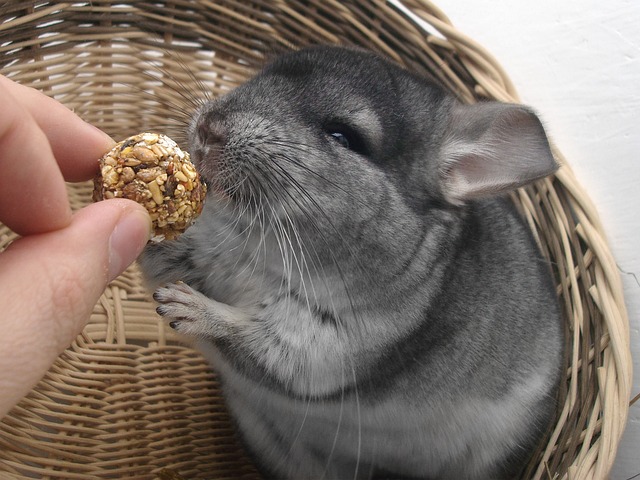 Image by Benjamin M. Groß from Pixabay
Image by Benjamin M. Groß from PixabayFeeding your chinchilla the right diet is essential for its health and well-being. Chinchillas are herbivores, and their nutritional needs are best met with a carefully balanced combination of pellets, hay, fresh vegetables, and occasional treats. However, it's important to be mindful of the specific types of food that are suitable for them.
Start with pellets specifically designed for chinchillas or other small pets. These pellets are packed with the nutrients chinchillas need, including fiber, vitamins, and minerals. Make sure to provide the pellets in a non-tip bowl to prevent spills and ensure that your chinchilla always has access to food. The amount of pellets you offer should be in moderation, as overfeeding can lead to obesity, which can have serious health consequences.
In addition to pellets, high-quality hay should be available to your chinchilla at all times. Hay is the cornerstone of a chinchilla's diet because it is high in fiber, which aids in digestion and helps maintain healthy teeth. Timothy hay is the best option for adult chinchillas because it’s low in protein and calcium, making it a perfect choice for their digestive system. You can offer other types of grass hays like meadow hay or orchard grass to add variety, but always ensure the hay is fresh and free from mold or contaminants.
While hay should be the majority of their diet, chinchillas can also enjoy fresh vegetables a couple of times a week. Leafy greens such as kale, spinach, and cilantro are excellent choices, but avoid giving them too much watery produce like cucumber or lettuce, as it can cause digestive upset. A small amount of carrot or bell pepper can also be offered occasionally, but keep in mind that vegetables should be given in moderation to prevent bloating or diarrhea.
One food you should never offer to your chinchilla is alfalfa. Alfalfa hay is too high in protein and calcium for adult chinchillas and can lead to kidney problems, bladder stones, or obesity. Alfalfa is only appropriate for young chinchillas, typically under six months of age, to help support their rapid growth.
Chinchillas also enjoy the occasional treat of fruit and nuts, but these should be given sparingly. Small pieces of apple, pear, or banana can be offered as an occasional treat. Nuts like almonds or hazelnuts are high in fats, so these should be given very infrequently, as too much fat can lead to obesity.
An interesting aspect of a chinchilla's diet is their caecotrophs. These are special droppings that chinchillas produce, which are rich in essential nutrients. Chinchillas will often eat their caecotrophs directly from their anus to absorb the nutrients they contain. This behavior is completely normal and healthy, as it helps ensure they receive all the necessary vitamins and minerals from their food.
By providing your chinchilla with a proper diet of high-quality hay, appropriate pellets, vegetables, and occasional treats, you’ll help keep them healthy and active. It’s essential to monitor their food intake, offer plenty of fresh water, and keep treats to a minimum to avoid any dietary imbalances. With proper care and feeding, your chinchilla will thrive and be a happy, healthy companion.
Are Chinchillas Good Pets? Creating a Social, Stimulating, and Safe Environment for Your Chinchillas
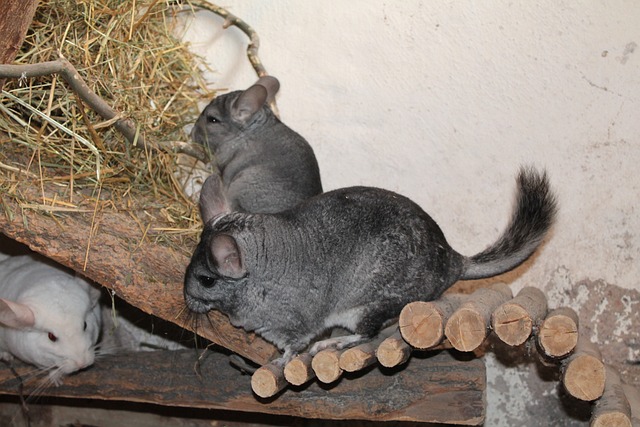 Image of Chinchillas by Martina from Pixabay
Image of Chinchillas by Martina from PixabayAre chinchillas good pets?Chinchillas are social creatures by nature and thrive when they are kept with others of their kind. In the wild, they live in large groups, sometimes numbering over 100 individuals, and this social structure helps them feel secure and stimulated. If you’re considering keeping more than one chinchilla, it’s best to provide them with a companion, as this can help alleviate loneliness and encourage natural behaviors. However, introducing new chinchillas to each other requires careful planning and patience.
If you’re thinking of mixing males and females, be cautious. While you can keep neutered males and females together, unaltered males can be territorial and aggressive, leading to conflicts. When introducing new chinchillas to an existing group, it's essential to keep them in separate cages for some time so they can get used to each other's scent without direct contact. This slow introduction allows them to acclimate to each other and reduces the likelihood of immediate aggression.
If the chinchillas are spitting, peeing on each other, fighting, or rearing up in a threatening manner, it’s a sign that they are not getting along. Keep their interactions limited and supervised until they calm down. Positive signs of acceptance include grooming each other, eating together, sitting calmly next to each other, and exploring their surroundings together. Once these behaviors are observed, they can begin to share a cage. However, be aware that some chinchillas prefer solitude and may not appreciate living with others. Always observe their behavior and adjust accordingly to ensure their happiness and safety.
Another aspect of chinchilla care is providing them with plenty of safe, stimulating activities. Chinchillas love to chew, and chewing is essential for keeping their teeth healthy and trimmed. Wooden toys are ideal for chinchillas, as they are natural and safe for chewing. Avoid plastic toys, as chinchillas tend to chew on plastic as well, which can be harmful to their digestive system. You can also provide chewable branches or sticks (such as those from apple or willow trees) to keep them entertained and engaged.
It's important to provide a safe, chinchilla-proofed space where your pet can play and explore. A playpen or a room that is free from hazards will allow your chinchilla to exercise and roam freely, providing the mental and physical stimulation they need. Ensure that any area you allow your chinchilla to explore is free of electrical cords, small objects that they can chew on, and any dangerous substances.
One of the most enjoyable activities for chinchillas is their love for dust baths. Chinchillas do not bathe in water; instead, they roll around in a fine, dust-like powder that helps to clean and condition their thick, dense fur. To provide a proper dust bath, give them a shallow dish or bowl filled with chinchilla dust or fine sand. This activity helps maintain their fur in pristine condition by absorbing oils and dirt. Your chinchilla will likely spend a lot of time in the dust bath, happily rolling and hopping around as part of their grooming routine.
Are chinchillas good pets? By creating a comfortable and stimulating environment that caters to their social needs, love of chewing, and dust bathing habits, you can ensure that your chinchilla has a fulfilling and happy life. Always observe your chinchilla's behavior to understand what works best for them—some may love the company of others, while others may prefer a quiet, solitary existence. The key is to provide a safe, enriched space that meets their unique needs and helps them thrive.
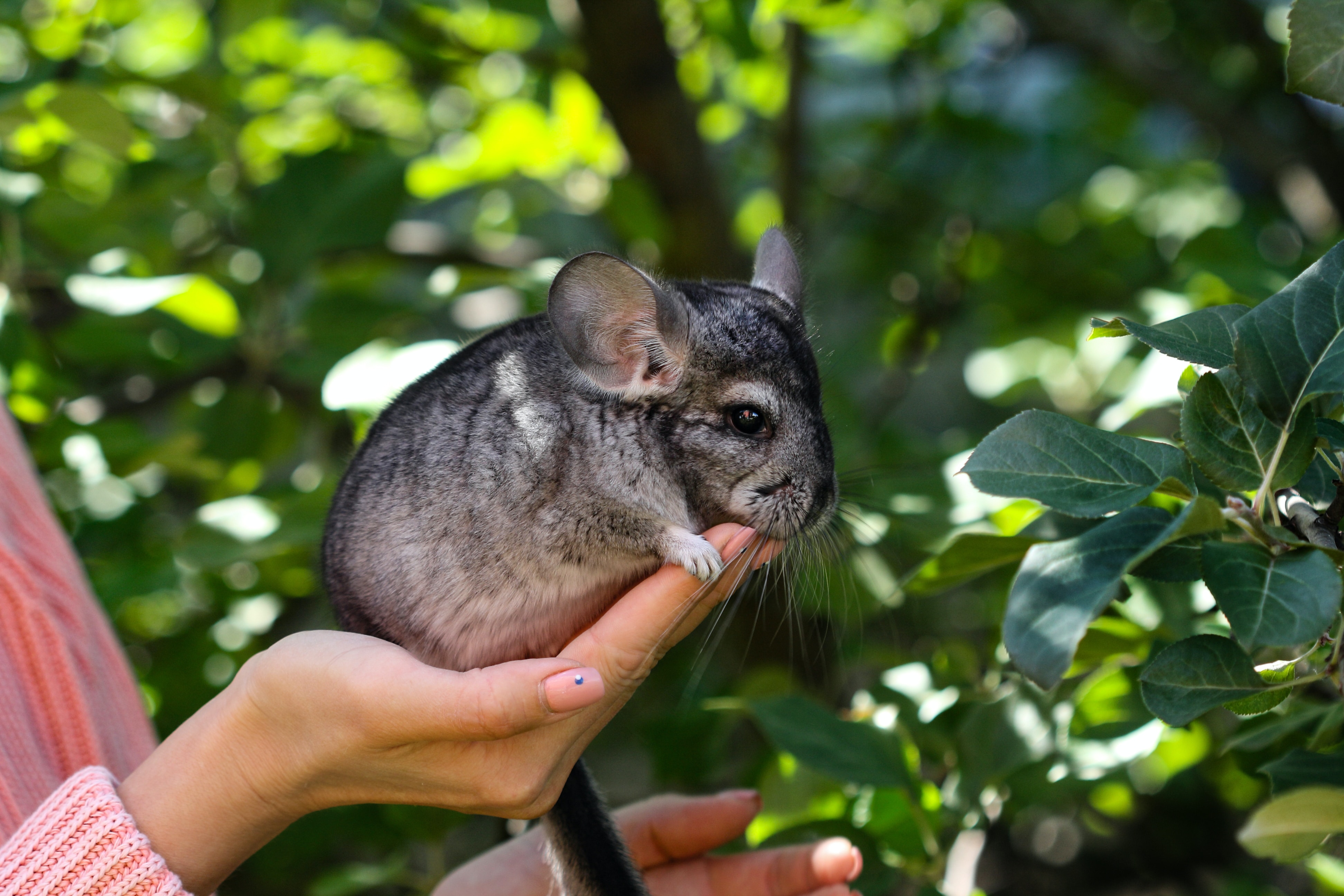 Photo by Nyusha Svoboda https://unsplash.com/photos/gray-rabbit-on-persons-hand-YpXDf4yXX2E
Photo by Nyusha Svoboda https://unsplash.com/photos/gray-rabbit-on-persons-hand-YpXDf4yXX2EChinchilla Size and Weight: Understanding Your Pet's Unique Physique
Chinchillas are small, yet robust creatures, typically measuring between 9 to 14 inches in body length, with their bushy tails adding another 3 to 6 inches to their overall size. These fluffy tails are one of their most distinctive features, often seen flicking or twitching as they interact with their environment. While both male and female chinchillas are relatively small, there is a noticeable difference in their size: females tend to be the larger of the two, reaching close to 2 pounds, whereas males are typically a bit smaller, weighing around 1 pound. Despite their modest size, chinchillas are muscular and well-built, with their dense, soft fur giving them an impressive, plump appearance. Their body size and weight can also impact the space they need, with larger chinchillas requiring more room to move around comfortably. Understanding these details will help you provide the right environment and care for your chinchilla, ensuring they thrive in your home.
.
Chinchilla Lifespan: How to Help Your Pet Live a Long and Healthy Life
 Photo by Nyusha Svoboda https://unsplash.com/photos/gray-rabbit-on-persons-hand-YpXDf4yXX2E
Photo by Nyusha Svoboda https://unsplash.com/photos/gray-rabbit-on-persons-hand-YpXDf4yXX2EAre chinchillas good pets?Chinchillas are known for their impressive longevity, with most living to around 10 years, though it’s not uncommon for them to live well beyond that. In fact, many pet chinchillas have been known to reach 20 years or more when provided with optimal care. Their lifespan can be influenced by various factors, so understanding what impacts their health and well-being is crucial to ensuring they thrive for as long as possible.
One of the most important aspects that can affect a chinchilla’s lifespan is nutrition. A balanced, high-quality diet is essential for their health. Poor nutrition, including an imbalance of hay, pellets, and fresh food, can lead to severe health issues that shorten their lives. Additionally, chinchillas are prone to dental problems, as their teeth grow continuously throughout their lives. Without proper wear from chewing the right foods, such as hay and safe wooden toys, their teeth can become overgrown, causing discomfort and potentially dangerous health complications.
Stress is another major factor that can impact the lifespan of a chinchilla. These sensitive animals require a calm, stable environment to thrive. Loud noises, frequent handling, and dramatic changes in their surroundings can cause stress that weakens their immune system and leads to health problems.
Chinchillas are also vulnerable to overheating, as they are native to the cool, dry climates of the Andes Mountains. Overheating can cause serious, life-threatening issues, so it’s essential to maintain a cool, well-ventilated environment, especially in warmer weather. Overheating is one of the more common causes of premature death in chinchillas, and preventing it requires attention to both room temperature and humidity levels.
Another danger for chinchillas is choking, which can occur if they swallow inappropriate items or food that they cannot properly chew. Ensuring they only have access to safe, suitable food and materials for chewing is vital in preventing these life-threatening situations.
Finally, chinchillas must be kept safe from other pets, especially animals that might view them as prey. Cats, dogs, and other predatory animals pose a significant threat to chinchillas and can seriously harm or even kill them if not kept separate.
Are chinchillas good pets? By being aware of these factors and providing your chinchilla with the right diet, environment, and care, you can help ensure that your pet lives a long, healthy, and happy life, possibly even surpassing the typical 10-year mark. With proper attention, chinchillas can be wonderful companions for decades.



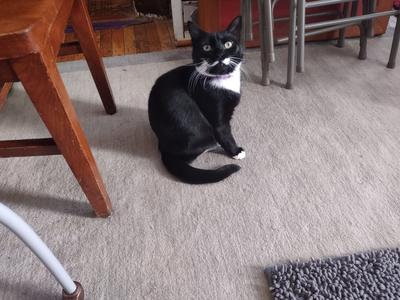


New! Comments
Have your say about what you just read! Leave me a comment in the box below.